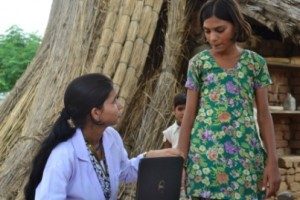Leading business model innovations in healthcare provision
This blog draws on the findings from research conducted on innovative social enterprise models at the Base of the Pyramid for the World Bank Social Enterprise Innovations team by Endeva and Ashley Insight. The research and corresponding case studies are available on the World Bank and OECD’s Innovation Policy Platform. Read about the models in the health sector here (not longer available).
Most health systems in developing countries struggle to fulfill even patients’ most basic medical needs. 44% of WHO Member States report to have less than 1 physician per 1000 population, and figures for specialists and in rural areas are even worse. Several business model innovations have emerged to tackle this lack of healthcare provision, two of which shall be outlined in this blog:
- Specialized health facilities strip down their services and remove all nonessential features, thus becoming more efficient and affordable
- Community health workers provide their service in areas with poor access to basic healthcare, alongside other services.

Affordable and quality specialized clinics and hospitals have emerged all over the world. Two strategies help these facilities to be successful: They use cross-subsidization to bring specialized treatment to low-income people, and deliver their highly standardized and streamlined care to a high volume of patients. The Indian non-profit LV Prasad Eye Institute (LVPEI) delivers quality eye care to patients of all socio-economic groups. In India alone, 62 million people are visually impaired. 80 percent of this impairment is preventable or treatable. Through cross-subsidization, LVPEI is able to charge low or even no fees to its low-income patients. Since its launch, LVPEI has delivered its services to more than 20 million people.
The Kenyan non-profit Tunza Family Health Network offers maternal care through its social franchise system. The network contributes to improving access to family planning services and access to wider family health services, thus reducing the

burden on a maternal health system which has made only moderate progress in the last decade. Relying on existing licensed health providers operating in the private sector, the network has expanded to include 316 franchise outlets. Most of these outlets are profitable, while the franchisor Tunza relies on donor funding. Patients are charged as little as USD2 per consultation. The specialized clinics model has most frequently been utilized for eye-care and reproductive health services. However, the model is also applied to other outpatient areas of medicine where expertise is niche, patients pay out-of-pocket and the set-up of clinics is less capital intensive than multi-specialty hospitals – such as dentistry or dialysis.
Most of the specialized health facilities have a network of voluntary health workers that reach out to their communities, raise awareness and provide referral services. While these are incentivized through access to free care or a modest salary, training community health workers (CHW) can be an innovative health solution in its own regard. Living Goods is a micro-franchise model in Uganda, in which CHW combine health service provision with the sale of high quality medicines and a wider range of health and household items. To start their micro-franchise, the mostly female CHW receive a below-market inventory loan and buy stock in cash from Living Goods headquarters at wholesale prices. The women are paid on a performance basis and earn a margin on their sales. Central stocking and cutting out layers of re-sellers make essential medicines affordable to low-income patients. And while essential medicines are free in the public sector, the risk of stock-outs after a time-consuming and costly journey to the nearest public dispensary is high.

Supported by mobile technology, the Indian non-profit Arogya Triage@Home enables young women to become health entrepreneurs, optimizing value for money in health care delivery to rural communities. The program delivers health check-ups and diagnostic services to rural communities of Rajasthan door-to-door. Arogya provides its CHW with a portable clinic laptop equipped with diagnostic devices and computerized treatment protocols. CHW relay their findings to health professionals at public facilities for review and intervention. With the diagnostics, Arogya creates an electronic medical record. The program aims to sell the anonymized aggregate data to public and private institutions, including research institutes and pharmaceutical companies.
What all these business models have in common? They all rely on highly standardized health services and have relatively low capital requirements. Most models initially rely on donor funding. In the case of specialized hospitals, sufficient demand for services as well as a paying middle-class market to charge at different price points is also crucial.
Where health providers manage to recruit and retain good physicians and community health workers, they can also reach a considerable scale. While Living Goods has supported more than 154,000 pregnancies to date, scaled models reach millions of patients. By innovating healthcare models and adding a business component to it, access to care can be improved and thus result in better health outcomes.
This blog is part of the October 2016 series on Exploring the social enterprise landscape, in partnership with the World Bank Group and endeva. Read the whole series for insight and opinion on policy, business models and definitions from social entrepreneurs, policy makers and facilitators around the world.